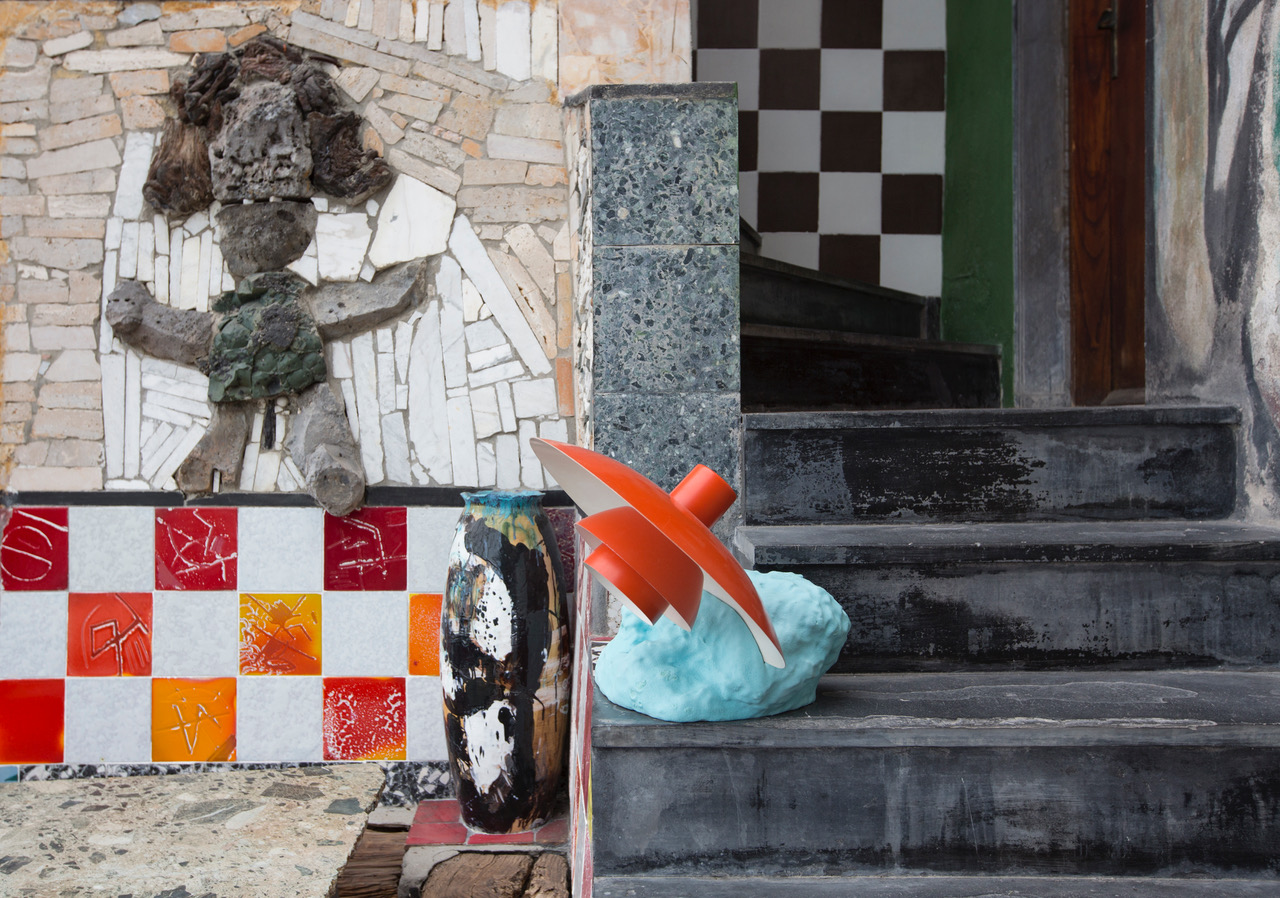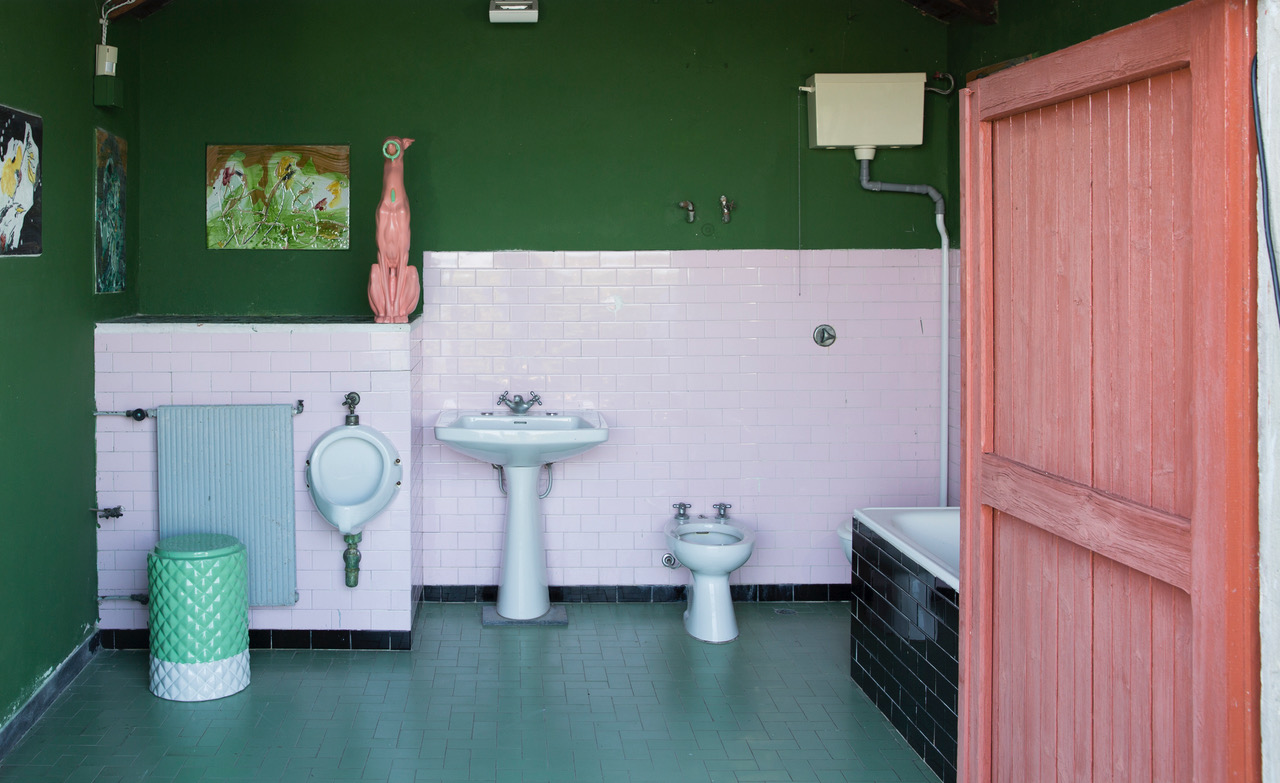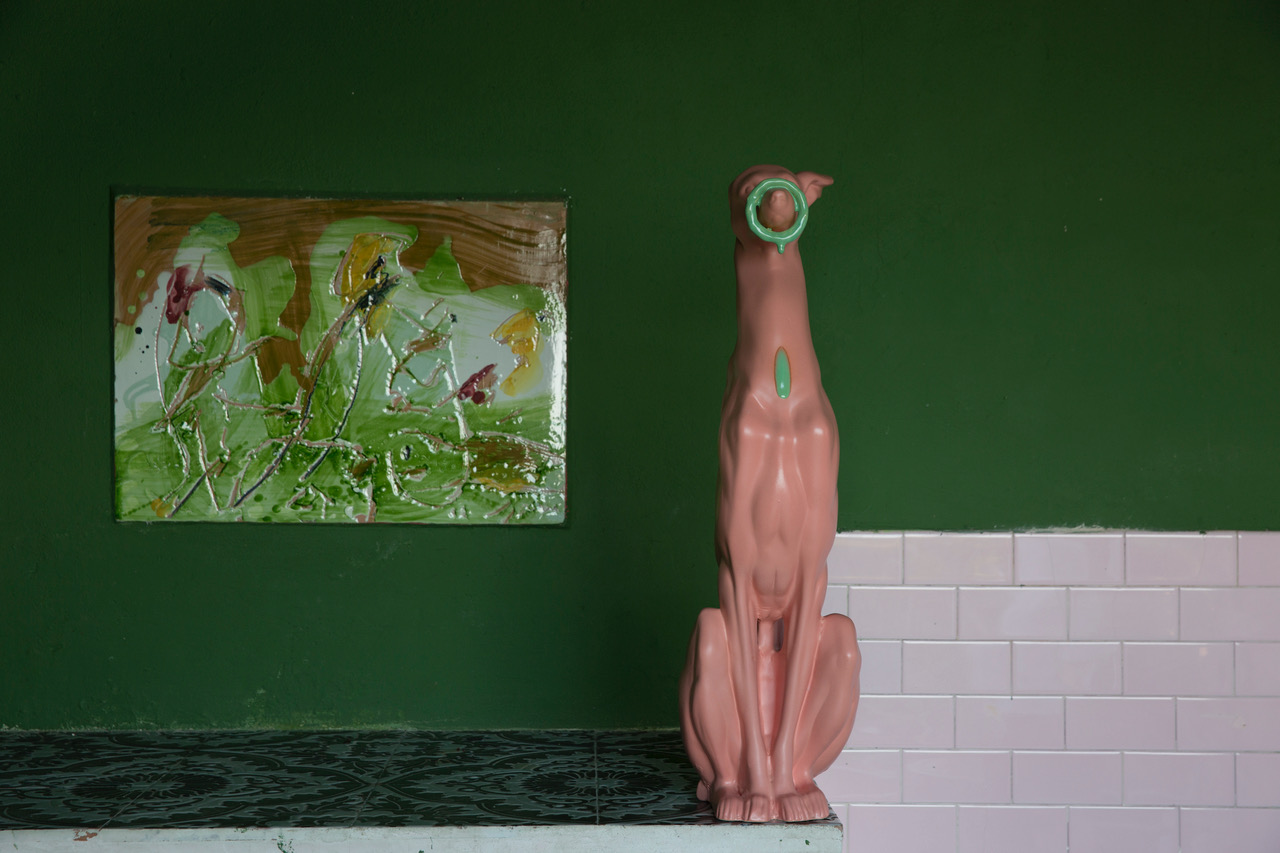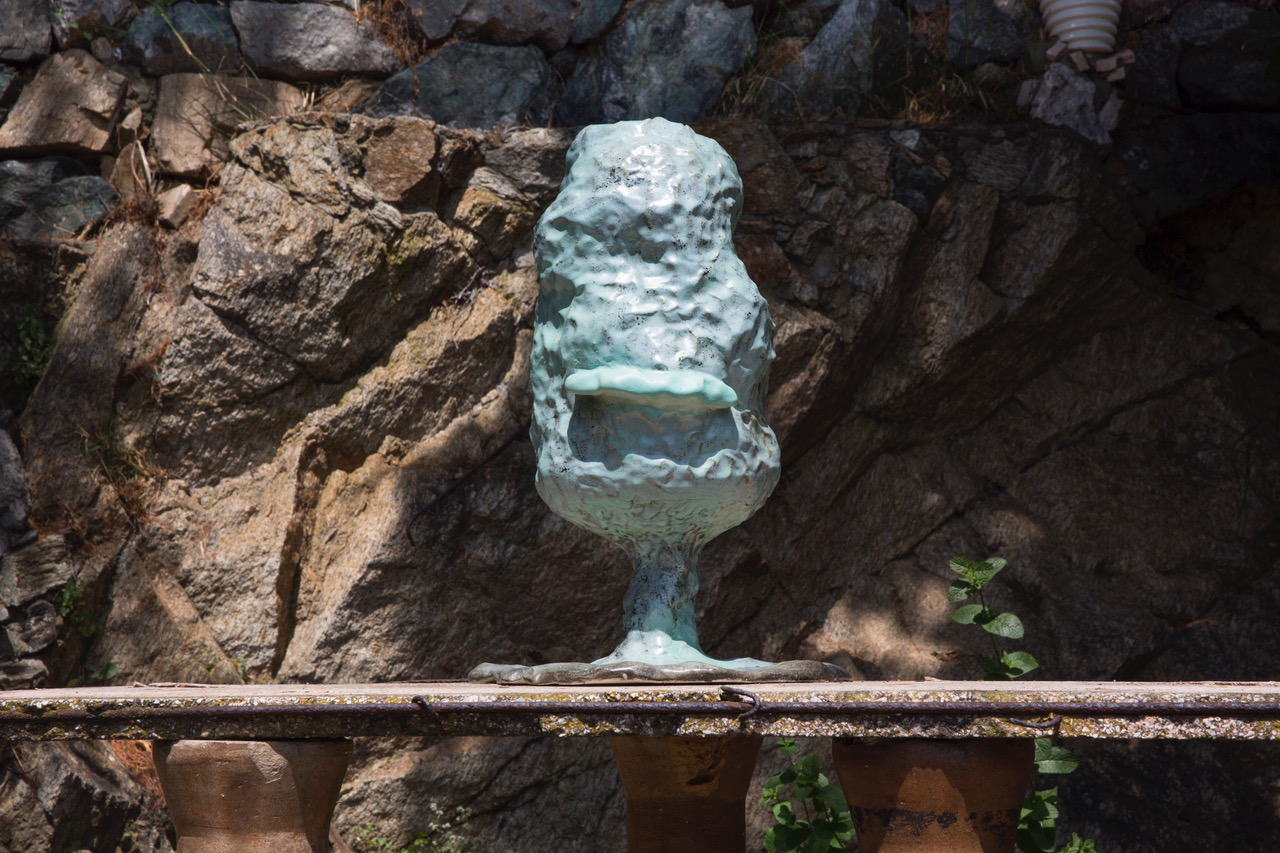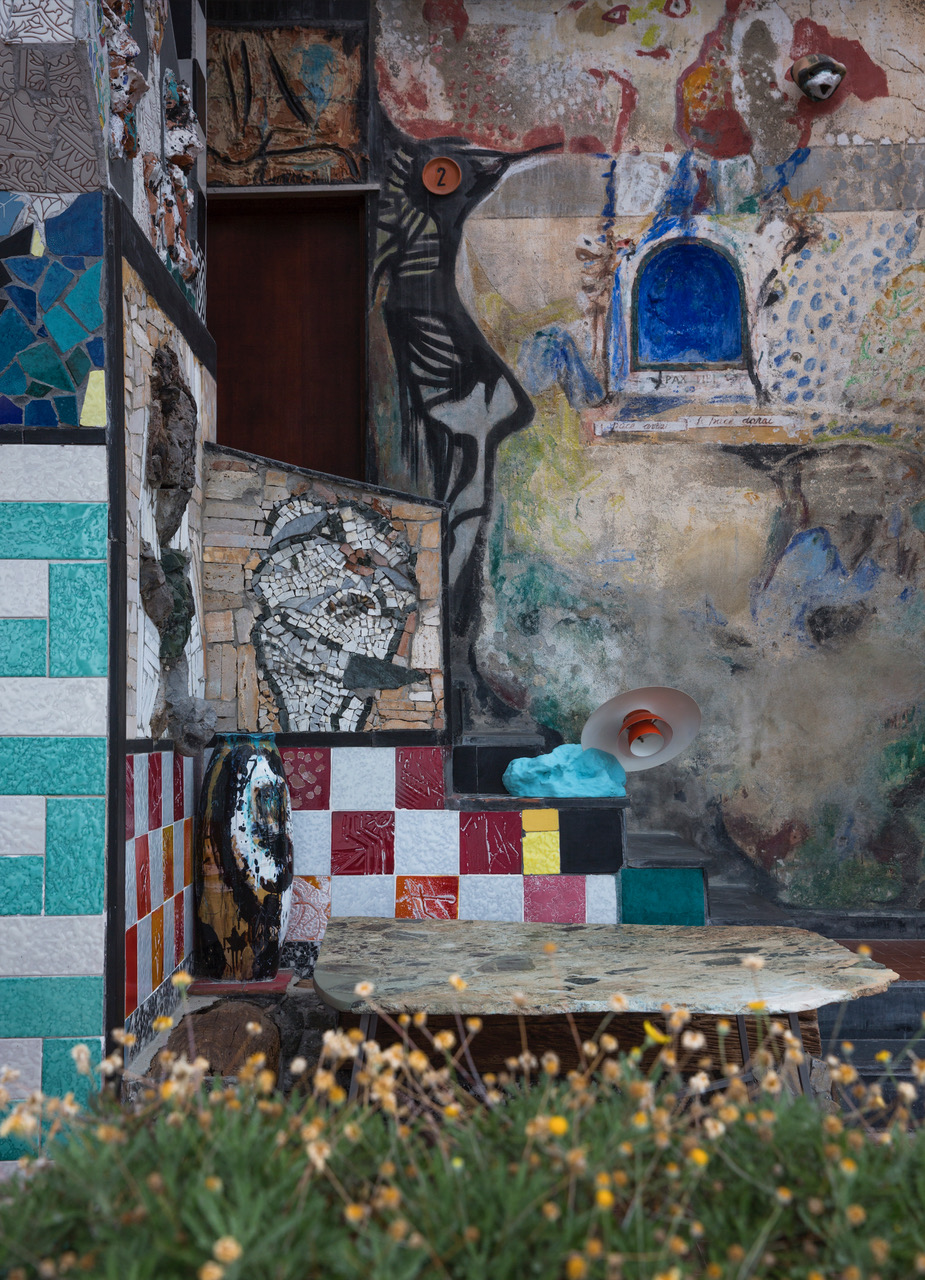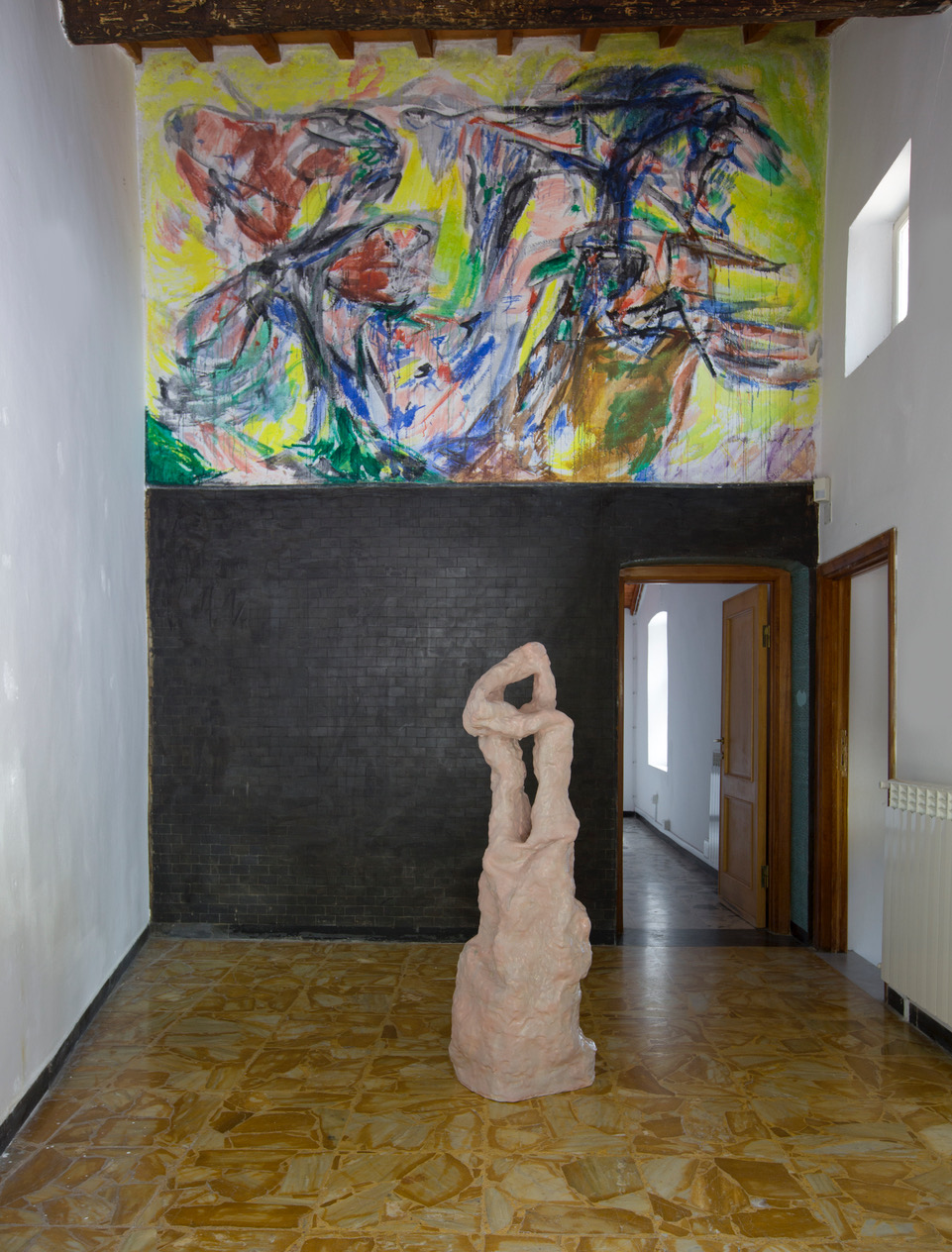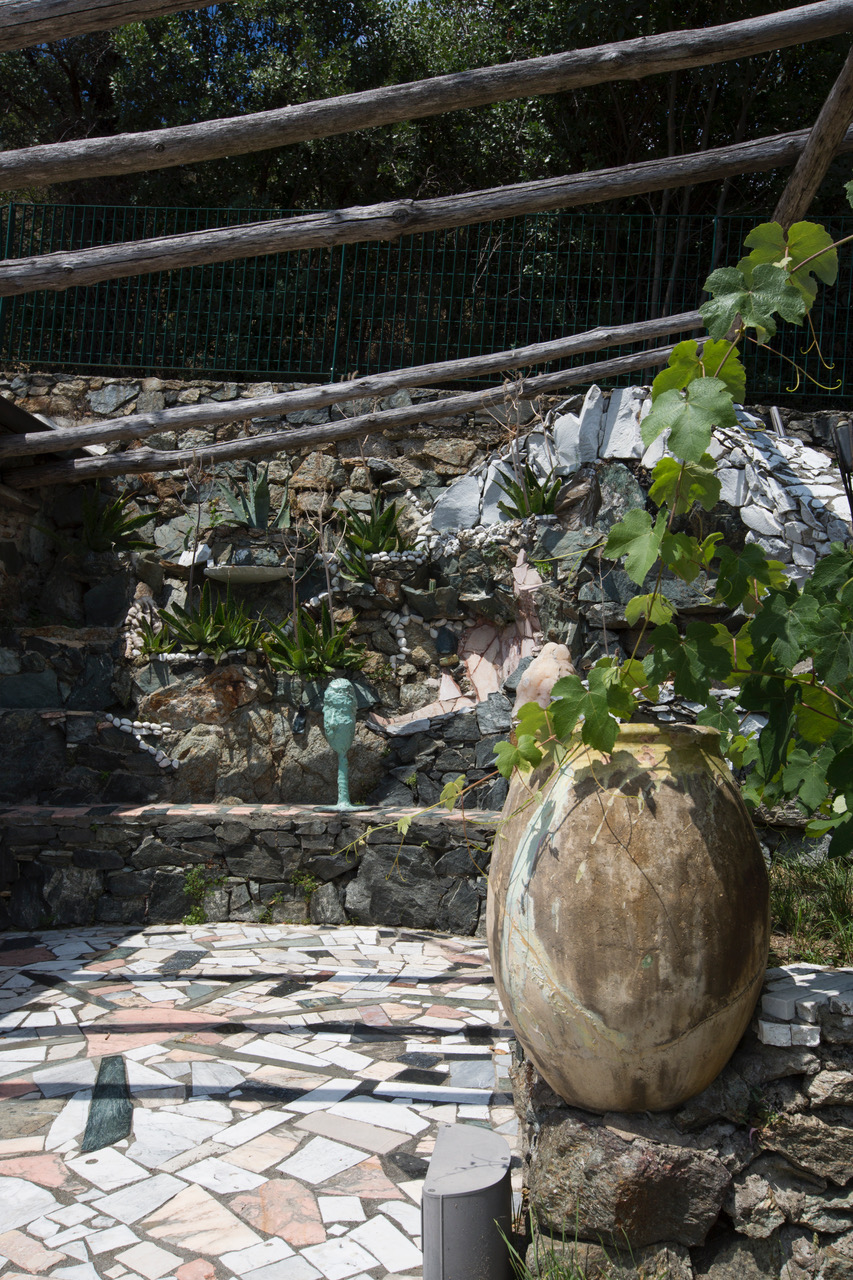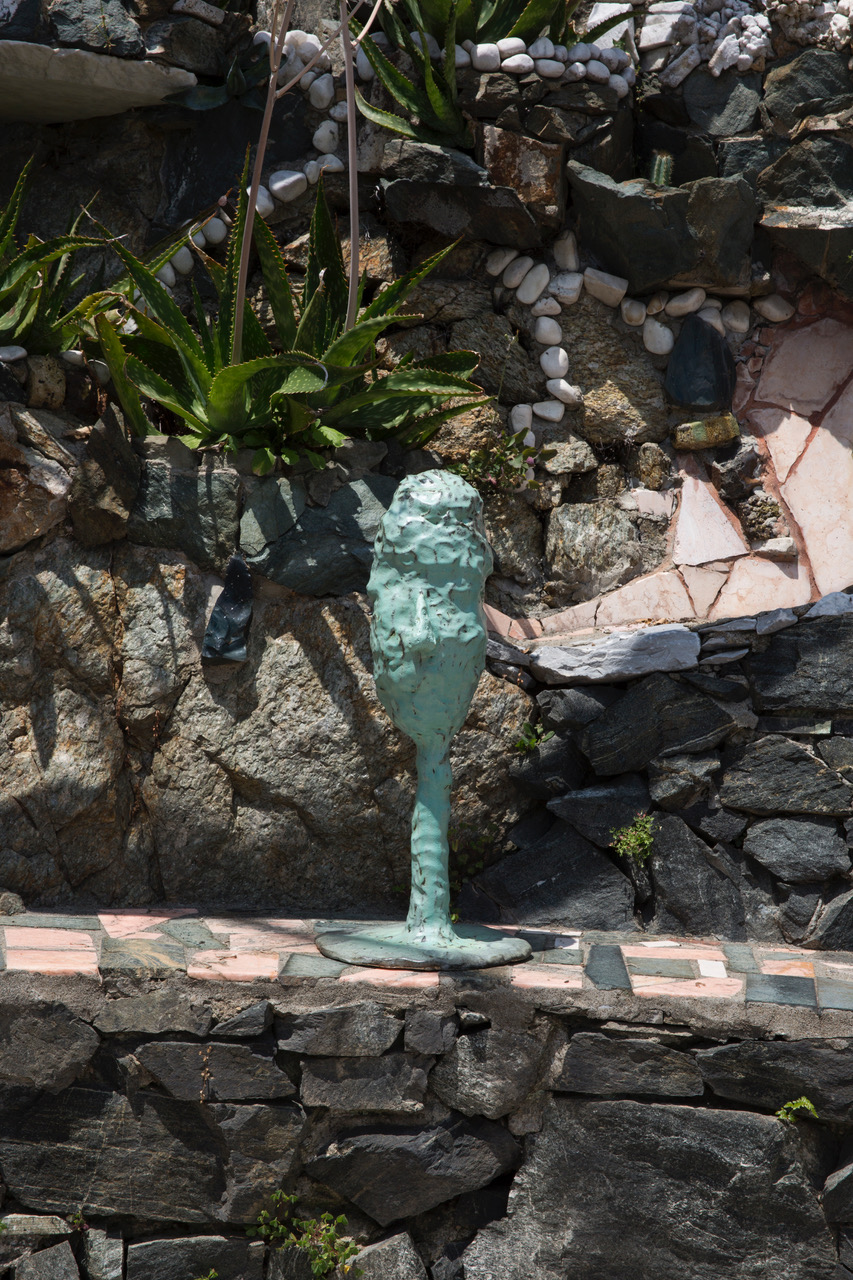Written By Maria Vogel
Anders Herwald Ruhwald creates large-scale installations that blur the lines of ceramics as we have come to view the medium. He uses the forms of a space to decide how and what he will create, combining organic elements with his materiality. Ruhwald’s works are redefining the role of ceramics in the contemporary-art scene. The Danish-born Ruhwald has called Detroit his home for the past 10 years, but his practice continues to take him all around the world.
How did your career in ceramics begin?
I got into ceramics when I was 15 at a small school in Copenhagen. At first it was exploratory – trying to figure out what I could do with the material. I had a good feeling for it and was able to experiment a lot while learning the basic skills and techniques. It became clear to me that I had to become an artist and I was fortunate to encounter many opportunities to learn and explore at a range of studios and schools. This eventually led me to the Royal College of Art in London, which in turn opened possibilities for me in the US.
How has your time in Denmark and the United States influenced your work?
When I grew up in Denmark there were two scenes for ceramics: one for art and one for craft. I always detested the stupidity of this division and when I lived there I tried to arrange small exhibitions with my friends that could chip away at these barriers. We did a few shows, which included works by people like Nils Erik Gjerdevik, Jesper Just along with under-appreciated artists like Nina Hole. But at the end the Danish scene just felt too small.
Fairly early in my life, I was exposed to West Coast Funk Ceramics, which opened up this totally different way of understanding the possibilities of ceramics, but also an alternative narrative for ceramics as it relates to art-history. It also made me realize that ceramics was only part of what I was interested in.
I don’t think of myself as a ceramic artist per se – ceramics and it history is important to me, but I work in broad field where ceramics is just one part of what I make and think about.
Naturally a lot of this baggage sits with me and continues to influence my thinking. I got my education first in Denmark and then the UK, but for the last 12 years I have been living in the US.
It’s complicated… I have been influenced by a lot of different people.
You just opened a show at Casa Museo Jorn in Albisola Italy. Can you tell us a little bit about this show and the history of the space?
Casa Museo Jorn is the former home and studio of the artist Asger Jorn. He lived there on and off from the late fifties till his death in 1973. Originally, it was an old farm house on the outskirts of Albisola Marina, but while Asger Jorn lived there, he entirely transformed the buildings and gardens making it into a living artwork which included a complicated web of paths, a grotto, a water reservoir, vegetable gardens, fruit trees, goats, parrots, and an array of patios, verandas and benches. The house was done as a collaboration with his friend Umberto Gambetta.
The whole place looks like Gaudi on speed. Almost everything is covered in tiles. Some made by Jorn himself, others are found or come from ceramic cull from the factories in Albisola. Jorn also made a lot of sculptures and ceramic reliefs the he placed around the house and gardens – some of which are still there today.
Jorn and Gambetta continued to work on the house till Jorn died and the whole place is a testament to Jorn’s desire to amalgamate art, architecture, and life. He held a range of artist gatherings in the space, from ceramic symposiums to situationist events with his friend Guy Debord. It is a wild place and one that deserves a lot more attention. The museum has only been open for a few years.
For the show I have made 15 new sculptures that are situated around the house and gardens. I see them as annotations to the space – a way to add some comments and questions using the language of sculpture.
Asger Jorn was a prolific writer and for this show I dove deep into the many texts he left behind. Jorn was truly an artist writer; He continually contradicts himself and insists on the sense of the nonsensical – in the texts are a profound critique of the late modern area and the growth of consumerism and capitalism.
I especially got attached to his critique of functionalist design from the thirties and forties. These texts seem to be foundational to what he eventually did to the house. He wanted architecture to be continually evolving and organic.
My work tries to recontextualize some of these ideas to our time and play up against the house and its history. None of this is very overt and I wanted the show to have a relatively light touch yet be able to engage the house and the complicated legacy of Jorn. With some of the pieces, I played around with the situationist ideas of detournment and decollage, making objects that take on and transform found objects.
An example of this can be found in the two sculptures La Dolce Vita I and II (Adaptable Body), which are attached to the kitchen furniture by commercial clamps from which amorphous glazed lumps of ceramics protrude. These sculptures integrate the furniture into the sculpture by reconfiguring the utilitarian value of the furniture. Yet this relationship is not fixed and is potentially changeable by releasing the clamp and placing the object elsewhere. Hereby the sculptures are a temporary animation of an otherwise set interior, rearranging the objects hierarchies of room. It has potential to be a continual changing type of sculpture that can make the any object it attaches to part of its meaning.
From where do you draw inspiration?
From places, books and the internet to begin with. I usually start with the place where I will be showing and try to visit it, then I start reading and learning about that place. Pretty soon I become impatient with the research and begin adding materials and found objects to bring a kind of reality to the ideas.
Usually when I work toward an exhibition I will start making a couple of components for pieces that I begin to play around with and add other things to them. That sets a path of exploration that then guides the rest of the research and making process. All of this is influenced by what I read, who I talk to and what I see in my everyday. So, my work always has this influx of what happens around me and what I experience. My studio work is a lot of back and forth with ideas, materials and objects. Everything is pretty much in flux until it leaves the studio.
For the Casa Museo Jorn [exhibition] it was very specific. I had known about the house since I was fairly young. My family had been coming to Liguria for the last 30 years and I was very familiar with the region and the regional aesthetics, which Jorn incorporated into his aesthetic. I didn’t have a chance to visit the museum until two years ago and it took a couple of visits to really take it all in, not just to comprehend what this place is, but also how it has changed since Asger Jorn lived there. It is a complex place materially and visually. It becomes even more layered so once you start reading into Jorn’s history.
How do materials affect your work?
Materials and materiality is all about discovery and finding possibilities. I always have a ton material tests going on. Some of these are experiments don’t have a specific use or direction. Other times I will be looking to find a specific material quality and color for a piece or idea.
The question of material and materiality is really complex. It has so much to do with what it makes me think about, how it relates to the world outside the studio and what realities it might invoke.
For the Asger Jorn House show I made three pieces called Old Man, which includes steel structures that I thought was going to be powder-coated initially. As I got the tests back from the shop, I really didn’t like it and I was totally at a loss for a month. I thought the pieces wouldn’t work out. But then I got into electroplating and steel dying and found an amazing shop north of Detroit that could do large-scale plating. I didn’t want the metal quality of the steel to disappear, but I didn’t like the steel in and of itself – it was too hard. It felt too cold and corporate.
The plating allows the metal to do its thing, yet not feel like steel or invoke all the connotations of steel. I eventually settled on a plating that gives a whole range of colors. Greens, reds, blues, yellows. It is totally different to anything that is in Casa Museo Jorn materially yet it felt exactly right. Asger Jorn wanted industry to become a tool for artists – it was part of his critique of capitalism, that the possibilities of industrial production should be geared towards an artistic output. The electro plating I ended up using is an anticorrosive treatment that is mainly used for small cheap metal parts in manufacturing. Using this treatment was a way of invoking this part of his thinking.
How do you continually challenge yourself in your practice?
A lot has to do with place. I have always liked travelling and living in places that I don’t understand very well. I grew up in Denmark, but Detroit has been my base for the last 10 years and I think I am only just now beginning to appreciate what a profound impact it has had on me and how I understand the world. It is a city filled with amazing people, but also one where some of the most basic conditions for living are in question. It is vastly different to the well-run and tightly regulated well-fare state that I grew up in and by that the Detroit continues to question my belief systems and challenge my view of the world.
This comes into my studio as well. Not overtly, but ambiently.
Many of your works have existed as installation or site-specific. Can you explain the process of creating a work that has a specific destination?
It really depends on the project and site. The installations I have done have everything to do with the place that they are in. It’s really difficult for me to make a piece without thinking about its context. This idea that you can read an artwork in isolation from everything else is to me such a strange construct. I know this is the inherent psychology of white-walled galleries, but I can’t think about an artwork without also considering its physical and social context. I think a good reading of a work relies on the ability to gauge how much to take in of what exists around the work and judge what is relevant for my reading of it. When I do an installation, it is a way to acknowledge this condition.
The site specificity of work offers possibility to bring in the aspect of time and history of a place into the work. By incorporating the space that the work exists in I consider how a space functions as a physical and psychological site. It is imbued by what happened there before, how this history is perceived and how we now navigate that space and what people might bring to it.
There seems to be a lot of positive focus on ceramic works recently which has not always been the case. What do you think the role of ceramics will be in future?
A lot of very different kinds of artists are incorporating ceramics into their practice these years and the material seems to jive with a lot of current ideas and questions we all have. In my opinion, ceramics comes in and out of focus over the years. It was out of flavor for a while in the eighties and nineties. But in the first part of the 20th century, especially in Europe, it played a similar role as it does currently on the contemporary scene. It’s all ebb and flow. It’s no different to other mediums.
At the end of every interview, we like to ask the artist to recommend a friend whose work you love for us to interview next. Who would you suggest?
My friend Matthew Angelo Harrison from Detroit. He shows with Jessica Silverman and participated in the New Museum Triennial this year. He is an amazing artist.
